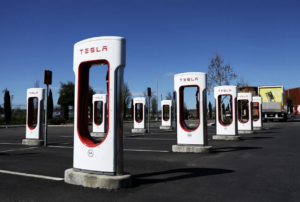
Volta Battery Report: What’s Happening in Batteries
The 2023 Volta Foundation Battery Report is out – it is the most comprehensive report in the battery space. At more than 300 slides, it is a beast, but a very interesting beast. I won’t do better than the key highlights they have already shared, so I am just reposting it below (this is from Volta Foundation’s LinkedIn post). The key phrases from my perspective are price declines (of EVs and Batteries), LFP (China’s preferred chemistry that is growing its market share), and NACS (the Tesla charging standard everyone else is adopting in the US).
Key Highlights:
🚘 EV Price Wars: Average EV prices drop by 25%, closing the gap with fossil fuel vehicles to under $3,000.
📉 Raw Materials: Supply surplus drives down costs, reducing cell-level expenses by 16% to $107/kWh.
🪨 Graphite Development: Attention shifts to graphite facilities outside China due to export restrictions.
🧪 Cutting-Edge Research: Na-ion technology gains traction, accounting for 13% of battery material research.
🔋 Form-Factor Trends: Large-format prismatic LFP cells gain popularity for EVs and BESS.
✅ NACS Adoption: Major OEMs in North America embrace NACS technology.
👩🔬 Talent Shortage: Junior battery engineers command six-figure salaries in Michigan and California. Credit: George Rose/Getty Images
Credit: George Rose/Getty Images
Exciting Boring News
The Department of Energy announced a pair of administration actions aimed at speeding up federal permitting of transmission projects – a move that should have real tangible benefits to transmission development. Essentially until now, different agencies conducted separate and unaligned review processes (think DOE, Fish and Wildlife, etc…); now they are all going to be funneled into one process and will be time bounded. This is near and dear to my heart – it was a project my boss at DOE championed when I was there more than a decade ago. Part of the problem historically was that, although the all the stakeholders were from the same government, their incentives weren’t fully aligned (Department of Energy was interested in building transmission, while the Fish and Wildlife Service cared more about…. fish and wildlife).
 Credit: Justin Sullivan/Getty Images
Credit: Justin Sullivan/Getty Images
Tesla Layoffs and the Fate of the Supercharger Network
Telsa is laying off 10% of its workforce as increased competition from other companies both domestically and in China impacts the company’s market share. Some of this is a normal evolution – Tesla used to essentially be the only game in town; now it isn’t. Interestingly, sales have noticeably dropped amongst people who identify as Democrats (but not independents or Republicans), suggesting Elon Musk’s polarizing public persona might be negatively impacting Tesla’s brand.
Additionally, one of the units that was slashed was the Supercharger division, which up until now has been a major competitive advantage for the business, and is presumably causing a lot of heartburn, since automakers in the US decided to adopt Tesla’s charging standard recently, largely to ensure they had access to the Supercharger network (the network isn’t going away, but presumably there will be delays with integration).
PFAS Regulations Forever
The EPA issued rules to limit PFAS, known as “forever chemicals,” in drinking water – the first time they addressed this category of substances. The same properties that make these substances so useful also make them very difficult to get rid of (they are in thing like waterproof materials, firefighting foam, and fuel cells).
This is an emerging area, with monitoring and disposal technologies still being commercialized (Evergreen invested in PFAS destruction company Enspired Solutions last year). I would guess with high likelihood that this will not be the last regulation on these substances – this is a remediation challenge that many stakeholders are just beginning to grapple with (it’s such a tough problem that some folks doubted these regulations would come anytime soon, because of the substantial changes and investments they would eventually trigger).
Other News
This Utility Dive article on groundwater based heat pumps featured Evergreen portfolio company Darcy Solutions.
US Steel is planning to implement a carbon capture project at Chicago-area Gary Steel Works. Hard to decarbonize industrial sectors like steel, cement, and chemicals are likely to see more of the carbon capture action than power sector in the near term (because better substitutes exist for power generation).
Leading battery manufacturer CATL announced its newest LFP battery with more than 600 mile range (for a vehicle it makes; it also supplies a lot of batteries to other automakers).
Chicago area based sustainable aviation fuels company Lanzajet announced another investment from Microsoft’s Climate Innovation Fund.
After pressure from the US, Mexico decided it would not provide incentives to Chinese EV makers (who could sell into the US market without tariffs if they set up shop in Mexico). This is interesting, and reflects the importance the federal government is placing on competing with Chinese EVs. It delays this friction in the US market, for now, but low-cost Chinese EVs remain an extreme strategic threat for both US and European automakers.
Climeworks is expanding its business from just developing direct air capture (DAC) to also coordinating carbon removal purchases from multiple sources, as a portfolio approach. This can reduce transaction costs for companies that just want to work with one counterparty while creating portfolio diversity; it is also an implicit reflection on the challenges scaling of DAC.